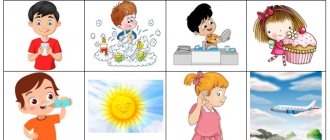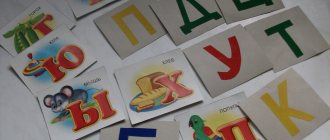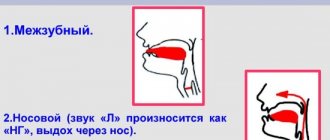TOPIC: "Fairytale Journey".
Goals
: practicing the ability to compose a common sentence based on a plot picture and supporting words, using “words-objects”, “words-features” and “words-actions”.
Planned results:
Subject:
– consolidate the ability to make a common sentence based on a picture;
– develop all types of speech activity of schoolchildren, the ability to read and write, listen and speak, as well as freely use their native language in various communication situations. Metasubject:
- develop coherent speech, auditory attention, phonemic perception, thinking, visual, figurative memory, fine motor skills;
- develop dialogic speech, speech breathing, articulatory apparatus;
- develop the ability to answer questions clearly and competently.
Personal:
- cultivate love and interest in fairy tales;
- develop cooperation skills: the ability to work in a team;
- to unite the children's team, to show the importance of each student in the unified work of the class.
Expected Result
:
Students will learn to form common sentences.
Health-saving technologies: exercises and games for coordinating speech with movement, finger exercises, breathing exercises.
Equipment : PC, presentation “Composing common sentences”, pencils, notebook, envelopes with words, personal mirror, evaluative emoticons.
Progress of the lesson:
1. Organizational moment.
Speech therapist:
We will sit in a circle together, We need to say hello. I say “Hello!” Smile back quickly. Hello right hand, Hello left hand, Hello friend, hello friend, Hello our entire friendly circle.
Speech therapist: Guys, look, we have guests today. Let's smile at our guests!
Today we have an unusual activity. We will go on a journey to a fairyland. Do you want to come with me?
Children: Yes.
Speech therapist: Then listen. In a certain kingdom, in a certain state, an evil witch has driven many clouds into the sky, and for days now the sun has not been seen, it has been raining. The King was saddened. Only brave, courageous knights can help lift the evil curse. Let's help the people of this country return the sun. To do this, you need to pass the test by completing all the tasks correctly. You are ready?
Children: Yes.
Speech therapist: Then let's start.
Summary of a group speech therapy lesson in 2nd grade with presentation
Summary of a group speech therapy lesson in 2nd grade
Author: Agafonova Irina Anatolyevna Place of work and position: MKS(K)OU boarding school of the V type No. 13, Izhevsk, speech therapist teacher Subject: Indication of the softness of consonants using vowels of the 2nd row. Lexical topic: Our home. Technology in everyday life Purpose: to consolidate students’ knowledge of the letters they have learned. Objectives: Correctional - educational:
- update knowledge about vowels.
Corrective and developmental:
- differentiate hard and soft consonant sounds;
- develop the ability to analyze through thinking - develop general motor skills and coordination of movements; - develop spatial orientation; Correctional and educational:
- develop the ability to switch, self-control;
— develop and improve communicative readiness for learning. -develop the ability to analyze the productivity of one’s activities; -develop the ability to self-esteem. Equipment: multimedia presentation, board, magnetic letters, syllabic table, cards with riddles, cards with words, cards with sentences, tables with words - paronyms, sound rulers, chips, support table for characterizing sounds, workbooks, colored pens, objects pictures of household appliances, self-assessment sheets for each student. Lesson plan. I. Org.
moment. II. Determining the topic and purpose of the lesson. Filling out the self-assessment sheet. III. Exercises for the development of articulatory-acoustic differentiations. IV. Guessing riddles V. Syllable and sound-letter analysis and synthesis. Filling out the self-assessment sheet VI.Phys. minute VII. Comparison of the lexical meaning of words that differ in the hardness/softness of the consonant. VIII. Independent work in notebooks using ICT. Filling out the self-assessment sheet. IX. Summary of the lesson. Progress of the lesson.
I Org. moment: - Hello guys, I am very glad to see your kind, smart faces and I want you to share your knowledge with our guests today. -Listen carefully to the poem. Fairytale, magical house. The alphabet is the mistress in it. The glorious people of letters live together in that house. Every morning we need to study. We don’t take our eyes off the board, and the teacher teaches us. Spruce, axe, shovel, hands – we hear sounds in every word. These sounds are different - vowels, consonants. II. Determining the topic and purpose of the lesson. - This magical house is empty. It does not have the necessary furniture and household appliances, because the vowels in their names have quarreled and do not want to be friends with each other. We need to help them, distribute the vowels of the 1st and 2nd rows across the floors. Slide No. 2 -Remember what vowels make the preceding consonant hard? - What vowels make the preceding consonant soft? -Name the paired vowels. -A-Z, O-Y, U-Y, E-E, Y-I. -Why do we need to distinguish sounds that are similar to the ear? -True, in order to correctly write and read the letters that represent them. If you complete all the tasks correctly today, we will once again fill the house with furniture and household appliances. - Look at the self-assessment sheet and tell me what we will do in class today?
— That’s right, we will carefully hear and distinguish similar-sounding sounds, pronounce them correctly, read and write the letters denoting them. -Remember the vowels of the first row -A, O, U, E, Y. -What consonants are they friends with? -With hard ones. — Which vowels indicate the softness of consonants? -YA,YO,YU,E,I Slide No. 3 -Formulate a conclusion about the designation of hardness/softness of consonants. - The hardness of consonants is indicated by the vowels of the 1st row - The softness of the consonants is indicated by the vowels of the 2nd row. - Well done. Take your self-assessment sheets and rate your work on the first line. III. Exercises for the development of articulatory-acoustic differentiation. Reading according to the syllabic table.
-Be careful. Remember that you need to answer by raising your hand, without shouting from your seat. -Find and read a column in which all vowels indicate the hardness of consonants. -Find and read a column in which all vowels indicate the softness of consonants. -Read line 2 from the bottom, which syllable is extra in this line, why? -Read the 2nd column on the right. Which syllable is missing in this column? Why? -Now read all the syllables in the table in which the vowels indicate the hardness of the consonants. -Read all the syllables in the table in which the vowels indicate the softness of the consonants. - Right. IV. Guessing riddles - read and guess the riddles 1 It’s good when it’s there and sit and lie down on it It’s given to us for relaxation Soft, plush (sofa) 2. Small magic box Toast will make it crispy Put bread in it quickly Press and wait! (toaster) 3. There is a Golden-colored Planet hanging on the wall - a switch of the Planet - friend-buddy (chandelier) 4. A one-legged one looks keenly, Leaning towards me a little If I read lying down - Maybe he reads too? (floor lamp) V. Syllabic sound-letter analysis and synthesis. Analysis of guessed words using object pictures, support tables for characterizing sounds, sound lines and chips (everyone works with their own word, then everyone checks each student). - Well done, now let's evaluate our work on the second line of the self-assessment sheet. VI. Physical minute Development of coordination of movements with speech and music (from the Zheleznovs’ repertoire “I want to build a house”) VII. Comparison of the lexical meaning of words that differ in the hardness/softness of the consonant. - Tell me, guys, can one sound or letter change a word? -Let's check (there is a card with paronym words on the board: small - m...l) -Replace the vowel of the 1st row “a” with its paired vowel of the 2nd row. -What word did you get? (mumbled) -Say these couple of words. -How are these words different? -By sound. -In meaning -The first sounds in words differ in hard/soft. -On the letter. In the first word we write the vowel letter a, in the second - i. -Draw a conclusion. -One incorrectly written letter, one incorrectly pronounced sound can change the meaning of an entire word. -Take your cards. Each of you has a couple of words. Think and fill in the missing letter in the second word. Underline the consonants and vowels with the appropriate color (rad - r...d, nose - n...s, bow - l...k, soap - mil). Exchange cards with your neighbor to check the task. Each student reads his own pair of words and explains how the words differ from each other. The speech therapist accompanies the children's explanation by showing them on the board. VIII. Independent work in notebooks using ICT. - Look at these proposals. Slide number 4. You need to read, insert the missing letters. Text on the monitor: Mom g...dit br...ki ut...gom. The tea was boiling on the stove. The movie was shown on TV. Sasha refers to the food in the refrigerator. They were glad to broadcast the concert. Dad toasted the crackers in the toaster. (Write the letters into the words on the card) -Look at the monitor again, (slide number 5) correct your mistakes. Write down in your notebook, separated by commas, only those words that refer to household appliances. -Read these words. Well done guys, now everything is in its place in the house of sounds. Slide No. 6.7 - Rate yourself on the self-assessment sheet on the third line. IX. Summary of the lesson . Slide No. 8 - Name the vowels of the 1st and 2nd rows. -What did we do in class today? -What was difficult? -What's easy? -What did you like most about the lesson? -Which vowels indicate the hardness of consonants? -Which vowels indicate the softness of consonants? X. Reflection. Slide No. 9 - Well done guys, you did a good job.
Slide number 10. Presentation on the topic: Indicating the softness of consonants using vowels 2 rows
We recommend watching:
Summary of a speech therapy lesson for grade 2. Summary of a speech therapy lesson in a group of children with intellectual disabilities. Summary of a lesson on the subject of speech therapy in grade 2 of a correctional school of the VIII type. A simulator for individual and group work with students on the differentiation of consonants that have acoustics.
Similar articles:
Lesson summary for 2nd grade. Composing words from syllables
Summary of a speech therapy lesson for 2nd grade students
Summary of an open speech therapy lesson, grades 2-3
Summary of individual speech therapy classes for 2nd grade students. Sound and letter L
Synopsis of a frontal speech therapy lesson in 2nd grade on the topic: Text."
SUMMARY OF FRONTAL Speech Therapy Session IN 2nd GRADE
Subject:
Text
Target:
formation of practical ideas about the text
Tasks:
Correctional and educational:
- form an idea of the text as interconnected sentences expressing a complete thought;
- develop the ability to compare text and a set of words;
- develop the ability to copy, dictating to yourself syllable by syllable and checking your notes against the written text.
Correctional and developmental:
- development of spelling vigilance;
—
develop auditory-verbal memory;
- develop memory, attention, thinking.
Correctional and educational:
—
strengthen the ability to listen, understand and follow verbal instructions; — education of accuracy, culture of behavior and communication in the classroom.
UUD:
Personal:
- the ability to listen and engage in dialogue, integrate into a peer group and build productive interaction and cooperation with peers and adults;
— the ability to independently evaluate one’s activities.
Regulatory:
— mastering the ability to accept and maintain the goals and objectives of educational activities, searching for means of its implementation;
— the ability to negotiate the distribution of functions and roles in joint activities.
Cognitive:
— formation of practical ideas about the text;
- ability to compare text and a set of words
Communicative:
- a positive attitude towards correctional classes as a necessity in order to become more successful in educational activities.
Equipment:
cards with deformed sentences, workbooks, trailers with words (sound, letter, syllable, word, sentence, text, speech), puzzles with letters, series of plot pictures with written sentences
Progress of the lesson:
- Organizing time
- The one who names the word-object will sit down. The one who names the action word will sit down. The one who names the sign word sits down. etc.
Guessing puzzles with letters
— What capital letters do you see?
-Which lowercase letters are hidden?
- Main part
Repetition of learned material
- Guess the riddles. For each correct answer, we will have a trailer, and at the end of today's lesson we will be able to build an entire train and send it towards knowledge.
Hey tell me friends
What can't we see?
If we clap our hands,
Or we'll stamp our feet
Guess what, dear friend,
So we will hear...(sound).
- What sounds are there? (vowels and consonants, hard and soft, voiced and voiceless)
Sat down on the pages
Thirty-three sisters.
They sat down next to each other - they were not silent,
Are they telling us riddles? (Letters).
- What happens if the letters are next to each other - a consonant and a vowel? (syllable)
- If the syllables become close together, the result is... (words)
- What happens if the words line up in meaning? (offer)
-What is a proposal? (Words related in meaning, a complete thought. A sentence always talks about something or someone and says something).
Learning new material
Cards with deformed sentences are hung around the classroom. Each child takes a card and makes a sentence.
sun, bright, shining, spring
on, buds, trees, swollen
along, loudly, murmurs, path, stream
good, like, on, spring, street
Then the teacher puts the sentences in the required order on the board:
The spring sun is shining brightly. The buds on the trees have swelled. A stream gurgles loudly along the path. It’s so nice outside in spring!
-What did I put on the board? (sentences). Sentences related in meaning to the same topic are called text.
-What is the topic of our text?
- Let's give our text a name. ( "Spring").
- Which carriage can we attach next on our train? (text)
-Copy this text into your notebook.
Fizminutka
- I will say the words. If the first sound in a word is voiced, you clap your hands, if it is deaf, you stomp your feet:
Juice, dad, bow, water, cat, hare, hat, beetle, house, cake….
Primary consolidation of the studied material
Group work
Children receive a series of story pictures and written sentences. Match the picture with the correct sentence. Place the pictures in the required sequence and read out the resulting text.
- Now attention!!!
In order for our train to move, we need a main carriage that will control our train.
-Look at our train, what will be the main carriage on the train? Today we communicated a lot, talked, wrote, what one concept-word is called all our activities? (SPEECH).
3. Summary of the lesson
- What is text?
— What is the difference between a text and a set of words?
— Which task did you find difficult?
—Which one did you handle with ease?
- Well done, you did a good job!
Topic: Word and syllable
Goals:
- Give the concept of “syllable”;
- teach to differentiate the concepts of “word” and “syllable”
Tasks:
- Teach students to divide words into syllables, determine the order of syllables in a word;
- teach syllabic analysis and synthesis of words;
- develop phonemic processes, attention and memory
- cultivate linguistic observation, love for the native language
Equipment:
- pictures of Fili and Totosha, object pictures, syllables, a set of strips of different lengths, walnuts, clothespins.





